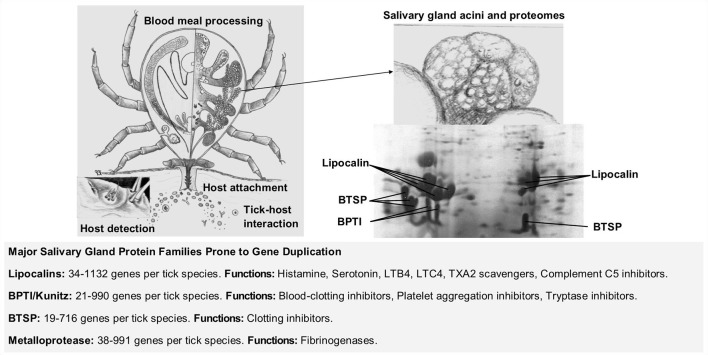Figure 1.
Gene duplication in the evolution of blood-feeding in ticks. The four main stages in the evolution of blood-feeding includes host detection, host attachment, tick-host interaction, and blood meal processing (Mans, 2014). Tick salivary glands play a central role in tick-host interactions by secreting the bioactive molecules that modulates host defense mechanisms. Some of these secreted proteins belong to large protein families expanded by gene duplication that can count from tens to hundreds of different genes per tick species. BPTI (Basic pancreatic trypsin inhibitor), BTSP (Basic tail secretory proteins), LTB4 (leukotriene B4), LTC4 (leukotriene C4), TXA2 (thromboxane A2). Information on protein families summarized from Mans et al. (2016).

